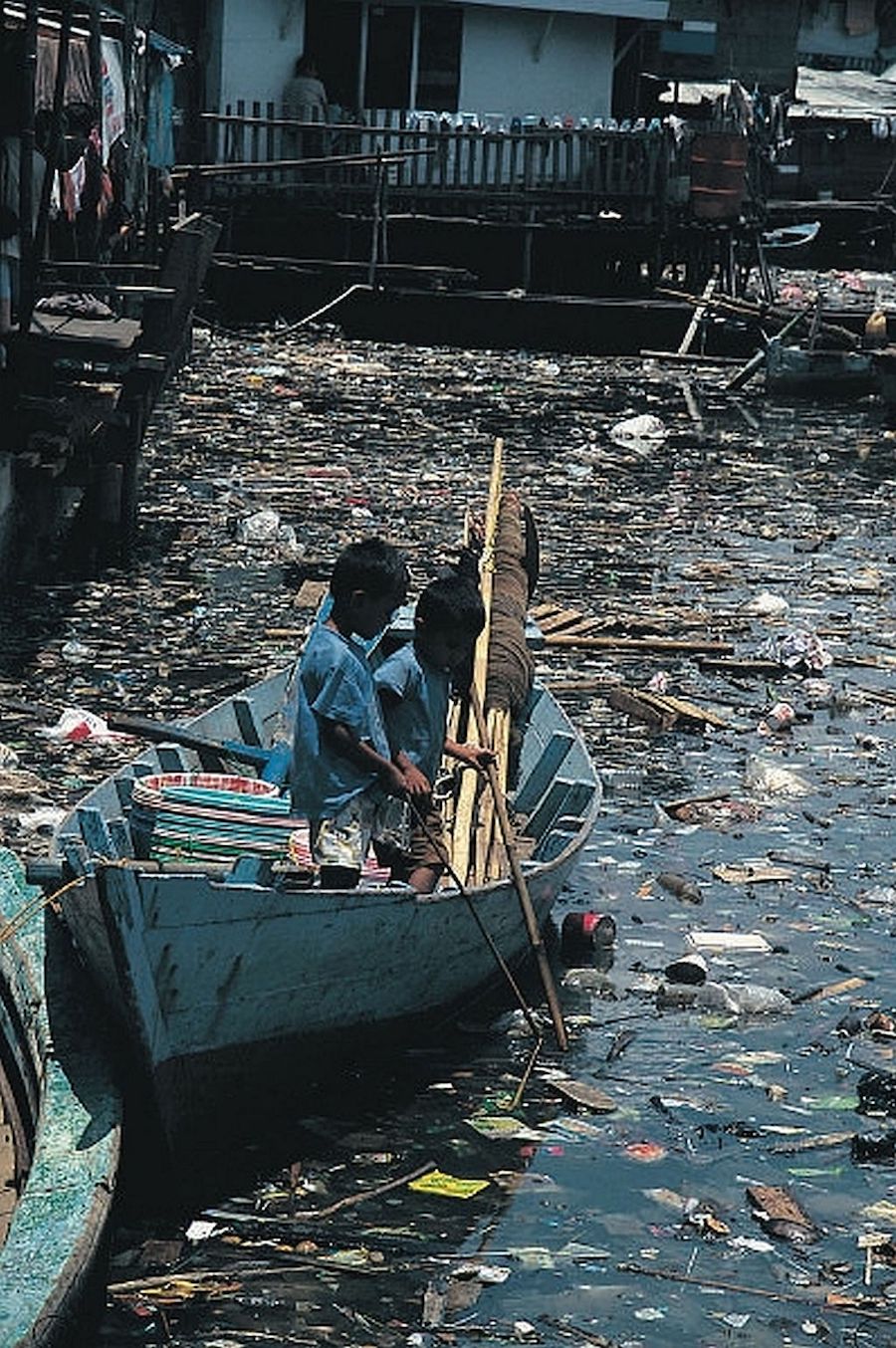the paradox of humanity’s arbitrary “self-destruction”

For decades, independent infectious disease specialists have warned public opinion of the accelerating pace of epidemics. Dengue fever, Ebola, SARS, H1N1, and Zika virus are just the tip of the iceberg. Covid-19 has now affected 176 countries on the planet and it is thought that the pandemic is the greatest threat to face humanity since World War II. Our attention in these weeks and months is primarily devoted to the countless events which Covid-19 generates. A total of around 350,000 people had died from Covid-19 as of 25 May. Around 50 million people die in the world each year. According to the World Health Organization (WHO), major casualties are caused by AIDS, malaria, tuberculosis, Ebola, measles epidemics, etc., but a far higher mortality rate, mainly affecting the “modern” part of the world, is caused by heart attack (15 million deaths per year), stroke, mental illness, stress, depression, cancer, Alzheimer’s, diabetes, obesity, etc., which are diseases paradoxically caused by humans themselves and which are the result of their inappropriate lifestyle.
Why are we not paying the same attention to these other threats, such as the pollution of the air, soil, and oceans, poor diet, lack of exercise, stress, the dangers that we create ourselves and which are progressing less invisibly, more slowly, but all the more systematically?
Civilisational diseases are mostly treated with ineffective drugs that cause secondary health complications. Many do not even realise that one goal of these drugs is to influence our thinking and our perception of the world around us. The sale of antidepressants, which are gradually destroying the human nervous system, generates $10 billion per year in the US alone.
The diseases of the modern world lead to an insidious death that can still be prevented by living a healthy life. On the one hand, major international organisations and institutions have been able to raise 2 billion people out of extreme poverty since the late 1990s, improve access to employment, food, sanitation facilities, and public health, and on average add more than ten years to the life expectancy of the world’s population. On the other hand, these institutions have not yet been able to cope with the new risks posed by the current evolution of the world. We are living in a global society and are trying to steer the development of the population in the same direction at an economic and technological level.
The development of artificial intelligence has an impact on all aspects of human activity and is advancing rapidly, but new ethical rules are not being established at the same rate to ensure that this is in the interest of society as a whole. Public opinion is influenced by the mass media, which is itself influenced by powerful groups of individuals (politicians, businessmen, or visionaries) who pursue the interests of only a certain part of the world’s population, aimed at bringing themselves even greater richness and increasing their power. Humanity is already perfectly connected and tracked, whether we like it or not, thanks to smart phones, chips, facial recognition technology, and so on.
Paradoxically, we are trying to discover the secrets of longevity, while at the same time artificially shortening our lives through our behaviour. Sometimes consciously, sometimes unconsciously (smoking, taking drugs, drinking too much alcohol, eating too much, etc.). We pollute the environment in which we live by producing far more of the things that we could go without. The energy needed to produce, distribute, and consume a product must be invested again in disposing of the unused surplus of the same product. Such production is within the power of only the small, ruling part of the world’s population. Air pollution is linked to 7 million deaths a year, which is around 12% of all deaths worldwide. We call this vicious cycle economic growth. We are drawn into this cycle, the consumer society, and it is hard to get out.
Why, then, is there no will to change the long-term condition of negative impacts on our health that cause tens of millions of people to die each year? Why do we not want to tackle this as quickly and radically as we have been able to deal with the sudden spread of a single virus?
We are digging away the ground beneath our own feet.
We are in everyday life literally surrounded by plastics that contain the toxic bisphenol A (BPA). This was eliminated from food packaging in 2015, but the substitute, bisphenol S (BPS), is equally, if not more, toxic because it is more durable. According to research, BPS is, for example, found in 89.4% of the American population tested. Even a small amount of these substances is linked to the occurrence of asthma, cancer, diabetes, and disorders of the immune system. Simply put, plastic is another scourge of the modern era.
We have long been exposed to heavy metals and are most frequently threatened by lead, mercury, and cadmium. We are becoming more susceptible to immunity diseases, we are increasing our risk of heart disease, cancer, or chronic illnesses, chronic back pain, recurring infections, fatigue, muscle cramps, mould, yeast infections. Heavy metals can also be found in some medicines or vaccines, sea fish, fungi, etc. If you use fluoride toothpaste, you should certainly never swallow it! Excessive ingestion of fluoride causes digestive problems, damages the balance of intestinal microflora, and thus impairs immunity, causes problems with the thyroid gland, is a possible cause of bone cancer, adversely affects brain functions, or causes kidney problems. It is the same with phosphorous. The quantity that we normally consume in food can be dangerous to the human body and could cause significant damage to our blood vessels.
Problems are caused by industrially- processed foods which increase the phosphorus content in food by up to several hundred percent. Proteins are a natural source of phosphorus. These are mainly found in our “modern” diet in meat, milk and all products made from it, and, of course, in eggs. There is nothing wrong with these foods, if they are of a good quality; it is only the quantity that we are capable of eating that is bad. Dairy products made from cows’ milk contain the most phosphorus and are therefore the most harmful. What is more, they do not give us any calcium. Humans are the only living beings who continue to drink milk as adults. Not only that, but the milk of another species of animal! We are no longer able to digest lactose after the age of 3-4 years. People who consume few or no dairy products (Asia, Africa) are far less susceptible to osteoporosis. The reason for the dairy scandal in China in 2007 was melamine, a chemical which is intended to give milk consistency. This product was found in milk powder, in ice cream. It is, however, a product that is usually used to produce adhesives and plastics. It is extremely dangerous because it causes kidney stones and has proved fatal for hundreds of young children. This, unfortunately, is not the only dairy scandal, the dairy lobby being the most powerful agricultural lobby in the world.

The UN declared 2013 to be the “World Year of Quinoa”. The nutritional value of this protein-rich seed, grown in the Andes, makes it a “super food”. Cultivated for millennia by Andean peasants, quinoa is an essential element in the culture and lives of thousands of people in Peru and Bolivia. Today it is exported all over the world, providing us with record quantities of protein and amino acids and making huge profits for the producers. Quinoa, however, is perfectly adapted to the Andean climate and can be grown easily there. Unfortunately, quinoa grown in the harmful environment of certain Asian countries might be toxic. Fish too have always been a healthy source of food for millions of people around the world. They contain many omega-3 fatty acids and proteins and their meat is dietary. The sea fish in large oceans now live in an environment with high mercury content, and should be therefore be avoided.
Energy drinks are a seemingly innocent, but dangerous trend. The consumption of energy drinks is a huge business, but is at the same time a serious risk to human health. They are literally packed with sugar. Many cases of heart attack, seizures and even death can be linked to drinking them. Not even gluten-free foods are necessarily better for our health than those with gluten. Most gluten-free bread is filled with products that contain refined flour with poor nutritional value, artificial additives, and sugar, increasing the risk of diabetes by 17%. Many cereals contain “cellulose”. This is a dressed-up way of saying pulp. Producers use cellulose to provide greater consistency and to add fibre to their products. This gives the illusion that the food is more nutritious than it really is. The truth is that we are eating treated sawdust! The “protection” of imported fresh food by exposure to radiation is a common technique used in many countries, except perhaps Denmark. It is claimed in the media that exposing food to radiation of up to a total average dose of 10 kGy does not give rise to any particular microbiological or nutritional problems. It is said that irradiated foods can be eaten without any toxicological danger. Losses are reduced and trade facilitated.
Two of the ingredients in deodorants are very harmful: parabens and aluminium salts. In perfumes, the presence of phthalates and synthetic musks is considered to be carcinogenic. These ingredients lead to nervous system disorders if absorbed through the skin during prolonged use.
Although the production of freon and other ozone-depleting substances was halted in 1987, long-term exposure to the sun is about 5 times more dangerous than 30 years ago, regardless of skin type, and we are at higher risk of skin cancer. On the other hand, since we cannot expose ourselves to long bouts of sunlight, we suffer from vitamin D deficiency and are at risk of osteoporosis, joint pain, and depression.
Almost all world brands of sneakers contain banned perfluorinated compounds that are unhealthy to the skin and can lead to eczema. Cheap bed linen is often treated with brominated flame retardants that are harmful to health. Synthetic clothes might cause allergic processes. Cheap furniture and wall paint might contain toxic additives in dyes and varnishes. We could continue in all aspects of our lives in this way.
This and much other clear evidence provides us with the incentive to quickly change our lifestyles and realise that it is up to us and us alone to avoid a great many diseases and to live largely in a good state of health.
Ing. Arch. Iva Drebitko

